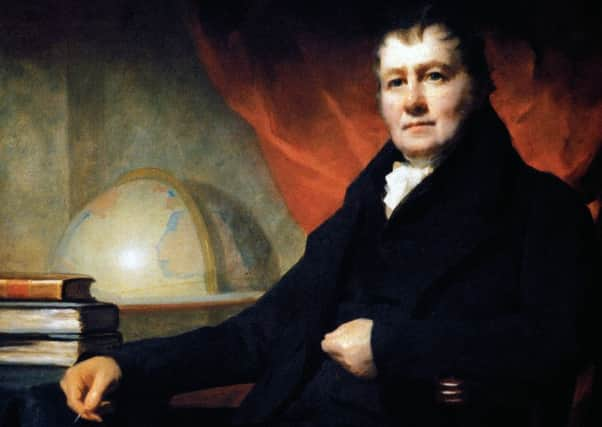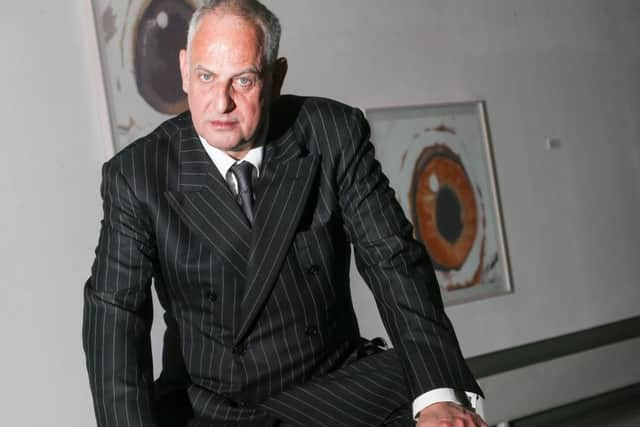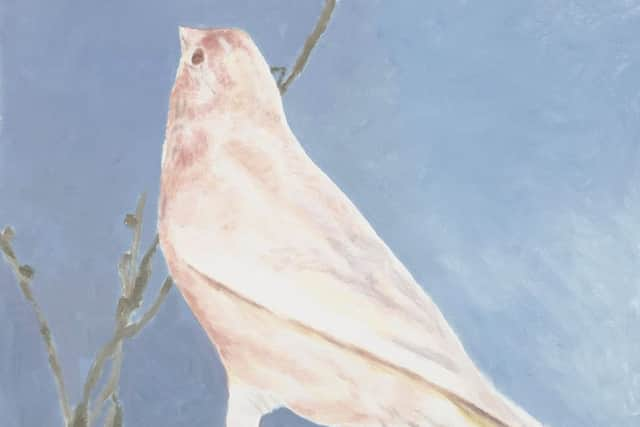How a Scot’s portrait inspired Belgian artist Luc Tuymans


LUC Tuymans first discovered the work of Scottish portraitist Sir Henry Raeburn when he was 16 years old. It was a moment of epiphany for the 58-year-old Belgian, now a renowned artist in his own right.
On a visit to the Museum of Fine Art in Ghent, Tuymans saw Raeburn’s “beautiful” portrait of Scottish landowner and Jamaican plantation owner Alexander Edgar. Tuymans, whose first Scottish exhibition opens in Edinburgh’s Talbot Rice Gallery this week, was “shocked”. He reveals this while he accompanies critics and arts journalists around his recent, disquieting exhibition, The Shore, at the David Zwirner gallery in Mayfair.
Advertisement
Hide AdAdvertisement
Hide AdThe teenage Tuymans was shocked “by the blue of Edgar’s eyeballs”. That blue still shocks him today, he adds, standing in front of three small, ghostly, bleached-out portraits of Scottish Enlightenment figures originally painted by Raeburn, but which Tuymans has made entirely his own, although each faux-digital image is suffused with a chilly light as blue as those eyeballs. The trio are now “in disguise, so to speak”, he tells me later. They are historian and university rector William Robertson, scientist and mathematician John Playfair and physicist John Robison and the Raeburn originals will be seen in Birds Of A Feather, Tuymans’ Edinburgh exhibition.


“What shocked me even more about that first painting was its unfinished nature, the accuracy of the brushwork,” says Tuymans, over coffee as black as his clothes when we talk in Zwirner’s office. “The strokes are persistent, very decisive, very modern, very dry, not lyrical like Hogarth. Raeburn painted with immediacy and urgency. Like Caravaggio, he just paints – he didn’t draw.”
Sparking up the first of a chain of cigarettes, Tuymans adds: “Raeburn has a very rigid approach. He’s harsh and unforgiving, quite Calvinist, I suppose, but very humanist. That first portrait still intrigues me and I had heard a lot about Scotland from my friend, the artist Douglas Gordon, so I visited Edinburgh, in the summer of 2014, during the run-up to Scotland’s independence referendum, and saw lots of Raeburns. I photographed them on my iPhone, printed them out, then photographed them again and blew them up, zooming in on the subjects’ faces until you get a real face that doesn’t feel of that time, a face you might encounter in the street in Edinburgh today. Open faces, faces that intrigue, faces that are funky.
“The portraits are very Scottish so there’s a feeling of splendid isolation, as well as an element of class.”
His Birds Of A Feather show marks not only Tuymans’ engagement with Raeburn, but also the Enlightenment. During his stay in Edinburgh, he watched the run-up to the referendum with interest. “I was fascinated by the political climate in Scotland, so I wanted to make paintings that give the idea that there’s an element of disruption to the isle, hence these portraits.


“I began reading a lot about the Enlightenment, which was enlightening to me. I was shocked to discover that I had not known how important Scottish people were in the world. These thinkers who believed in the ability of humans to shape their future rationally and whose influence extended as far as the American constitution. Also I was moved by their belief that you can be poor but not illiterate. Yet the class system still prevails. It was a revelation.”
The ethics of the Enlightenment, which prioritised reason, science, tolerance, rule of law, trade and individualism over traditional lines of authority, is therefore juxtaposed with notions of impending horror of today’s world in other recent works, such as his monumental painting The Shore, which depicts people the moment before they are shot, alluding to Goya’s Black Paintings. Meanwhile, a major retrospective of Tuymans’ work has just opened in Doha. For the biggest exhibition of his career, he has made a new group of paintings that references, albeit obliquely, Isil’s atrocities in the Middle East, again influenced by Goya’s “pinturas negras”.
A profoundly political, provocative artist, Tuymans has addressed Belgian colonialism in Congo, the Holocaust, serial killers and post-9/11 America in his work, interrogating the way that facts are filtered down to us. He remains unapologetic about his love of figurative painting. “Painting fascinates me and gives me a lot of pleasure. Painting is powerful,” he says.
Advertisement
Hide AdAdvertisement
Hide AdHe always paints from pre-existing imagery, ranging from internet images, newspaper articles and magazine pictures to TV footage and old movies. In Edinburgh he even found inspiration from the wallpaper in the Balmoral Hotel while having afternoon tea with his wife. His painting, Cloud, is based on the pattern, showing an obelisk in a wooded landscape, with a single puffy cloud in the sky, “a big, floating croissant – that’s the disgust we have for the class society”.
He has never made any secret of the fact that he appropriates found imagery, although when I met him, he was trailing clouds of controversy. He had just been found guilty of plagiarism, in a Belgian civil court, after using a newspaper photograph by Katrijn Van Giel to paint the politician Jean-Marie Dedecker. The case was settled out of court this month. In a joint statement the confidential agreement was described as “amicable.”
So why call his Edinburgh exhibition Birds Of A Feather?
“I wanted to make new work for Edinburgh, so the [Raeburn] portraits will be juxtaposed with same-size paintings of yellow canaries, very colourful. Edinburgh University has the largest collection of stuffed birds in the world – a natural, historical, scientific connection with the Enlightenment. But the title comes from a book, The American Woman’s Encyclopedia Of Home Decorating, so I hope that engaging with the domestic and the mundane might prompt consideration of the role of women in the Enlightenment or even the Highland Clearances. My fascination with Scotland and the Scots is only just beginning.”
• Luc Tuymans: Birds Of A Feather is at the Talbot Rice Gallery, Edinburgh, from Saturday until 19 December. www.ed.ac.uk/about/museums-galleries/talbot